When was the last time you ate some delicious chocolate?
If you are like me, you would make sure to always have your stock filled with this delicacy.
Especially in tough times, you need it more than ever. And you are trying to hide the chocolate from yourself. Yet, you would always find it again and indulge in its sweet-bitter taste that feels like home to you.
But did you know that chocolate, as well as other foods like beer and wine and bread, would not taste as we know it if it wasn’t for our little microbial friends?
That bacteria and microbes actually make the chocolate taste because they produce certain molecules that give it its flavour?
So, next time you enjoy your piece of chocolate, be grateful to bacteria and their superpowers for providing you with such a delicious fermentation product.
Where does chocolate come from?
It all starts with cocoa beans.
Cocoa beans are the seeds of the fruit pod of the tree Theobroma cacao that grows in tropical regions. These beans usually grow within the slimy white-creamy pulp inside the pod.
When the pods are ripe, people harvest and open them. They take out the beans and the pulp from the pod and leave them in the sun to ferment. This takes up to a week, during which the beans are regularly moved to avoid the growth of toxic fungi.
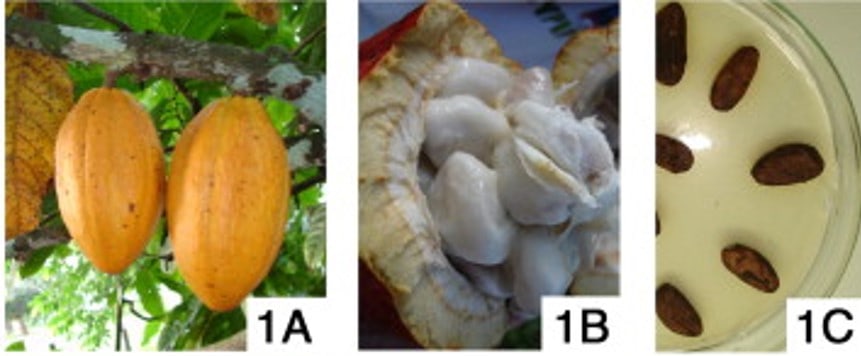
When the beans are dry, they are roasted to kill the remaining bacteria. This process is also important for the flavour of the beans. Then the beans are crushed into cocoa nibs and separated into cocoa powder and cocoa butter and processed into delicious chocolate.
Which bacteria are involved in cocoa fermentation?
When growing on the tree, the inner of the fruit pod is free of microbes. Only the surface of the pod is covered by different bacteria, yeasts and fungi. This consortium of microorganisms is the co-called COCOBIOTA.
When opening the pods, the microbes from the outside come in contact with the inner pulp where they start doing their magic. Without the microbial activity, the pulp is full of sucrose and citric acid and tastes very “sugary acidic and really good. Really unexpected.” as our graphical wizard, Noémie knows from her own experience.
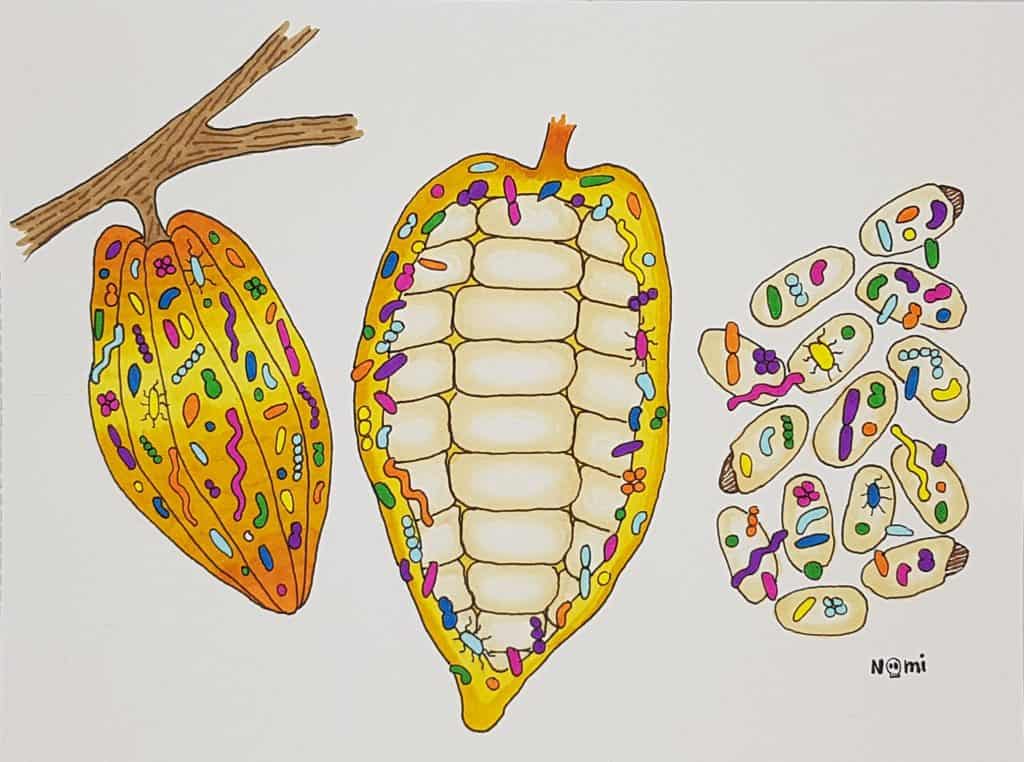
Interestingly, cocoa fermentation is a naturally occurring process, so no artificial bacterial starter culture is added. Only those microbes that are present on the pod ferment the beans.
And scientists found that the superheroes of chocolate fermentation are lactic acid bacteria like Lactobacillus fermentum and Acetobacter pasteurianus and the yeasts Saccharomyces cerevisiae, Hanseniaspora thailandica, Hanseniaspora opuntiae and Pichia kudriavzevii. Also, many other microbes, that are still not well characterised, are involved in the process.
What happens during cocoa fermentation?
Since the inner pulp of the bean is so acidic, not many bacteria grow on it. However, yeasts and lactic acid bacteria love this kind of sour environment. So, they grow and metabolise the pulp.
First, yeast enzymes break down the sucrose of the pulp into the sugars glucose and fructose.
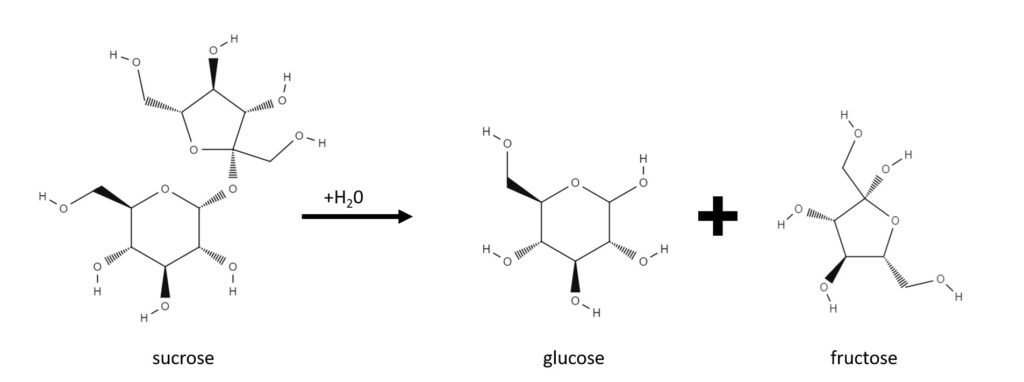
Next, different yeast strains metabolise the glucose and fructose and produce ethanol from the sugars. This is the actual fermentation process. In the next step, lactic acid bacteria make acetic acid and lactic acid from the ethanol.
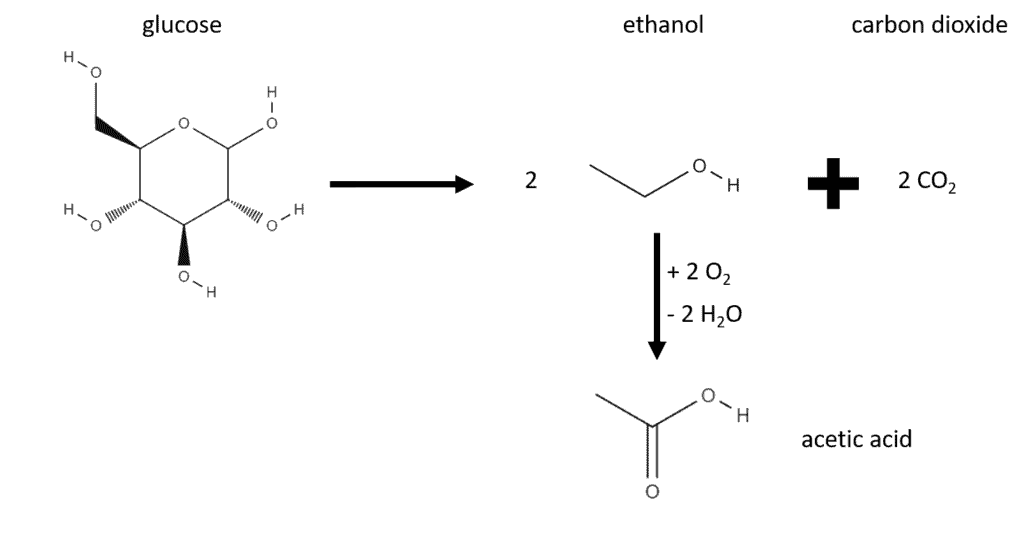
Due to the metabolic activity of the microbes, the temperature of the pulp rises. Yeasts generally do not like this warmth and die.
Instead, other microbes break down the citric acid which makes the pulp less acidic. Now it is an environment that is very friendly for other bacteria so that bacteria like Bacillus, and fungi, as for example Penicillium citrinum and Aspergillus fumigatus start growing.
This consortium of microorganisms produces several compounds that diffuse into the cocoa beans. Without the bacterial activity, the raw beans “are definitely far from chocolate taste” as Noémie put it.
What chocolate-tasting molecules do bacteria produce during cocoa fermentation?
Scientists are just starting to understand the microbial network and metabolism that create the chocolate taste. You can understand the bacterial metabolism as the following phenomenon.
When bacteria live in an environment with an overload of nutrients (like within the pulp full of sugar), they switch their metabolism to high activity. In this mode, bacteria use their normal metabolism to grow and divide and be happy. On top of that, they have all that excess sugar with which they fill up the cell storage for bad times. And from these stored sugars, they produce additional fancy molecules, so-called secondary metabolites.
Imagine the sugars as your monthly salary. In normal times, you pay all your basic monthly bills, like rent, electricity etc, and probably put the rest in your savings. When you get a massive paycheck and swim in cash, you do all that as well, plus you buy some additional fancy stuff that you don’t really need to survive. This additional stuff represents those secondary metabolites.
Secondary metabolites are often super complex molecules and certain bacteria even produce unique compounds that no one else produces. For example, antibiotics are secondary metabolites as well and so are certain probiotics.
Bacteria produce the right mix for the chocolate taste
In the case of chocolate, the right composition of the secondary metabolites is important to give chocolate its unique taste.
For example, the bitter taste of chocolate comes from caffeine and theobromine. These compounds are especially important if you prefer chocolate with higher cocoa content as it contains more caffeine and less sugar.
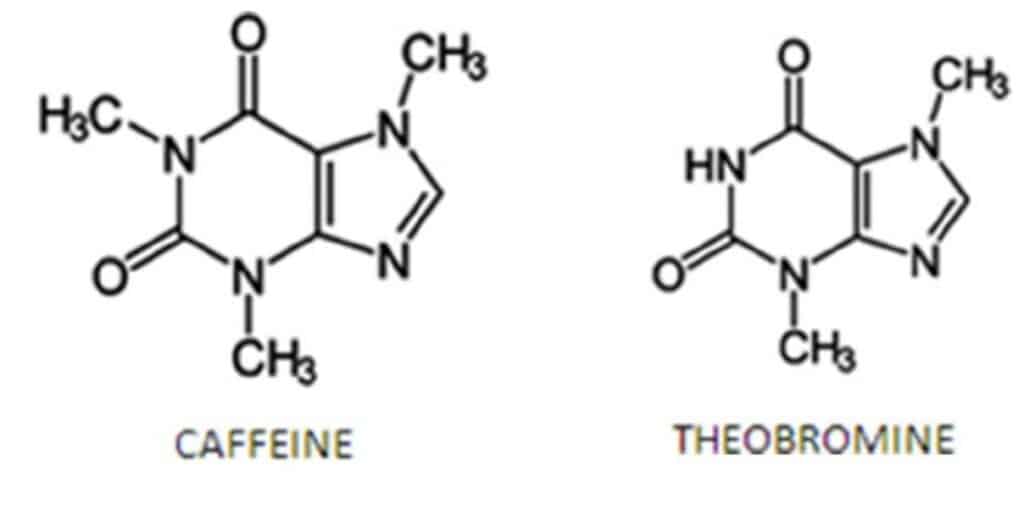
Another group of secondary metabolites that microbes produce during cocoa fermentation is polyphenols. Polyphenols are also prebiotics so they are actually beneficial for our health. You can find other polyphenols also in some fruits, nuts, red wine and, obviously, chocolate.
In all, by producing the right mix of these secondary metabolites, bacteria and fungi change the taste of the cocoa bean into the delicious chocolate flavour that you are familiar with.
Thank bacteria for the delicious chocolate taste
And to make you feel better when enjoying your chocolate: Researchers found in animal and human studies that cocoa itself has health benefits. After eating cocoa, people showed lower rates of cardiovascular disease, diabetes and vasodilation which might even have positive impacts on learning and memory regions.
However, as always when it comes to diet, quantity is key ?
So, the next time you enjoy your chocolate, be grateful to bacteria and their chocolatey superpowers!

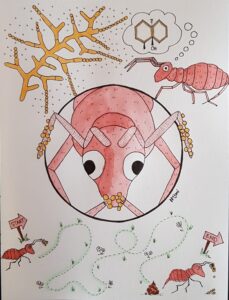
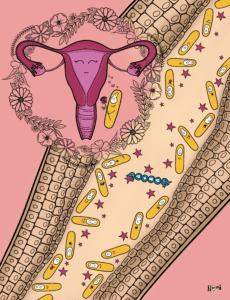

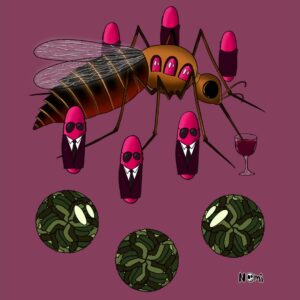

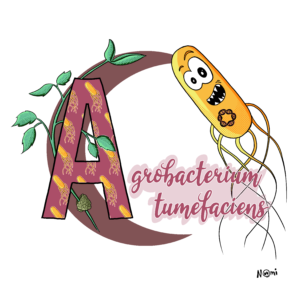
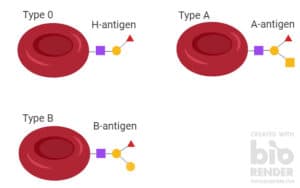
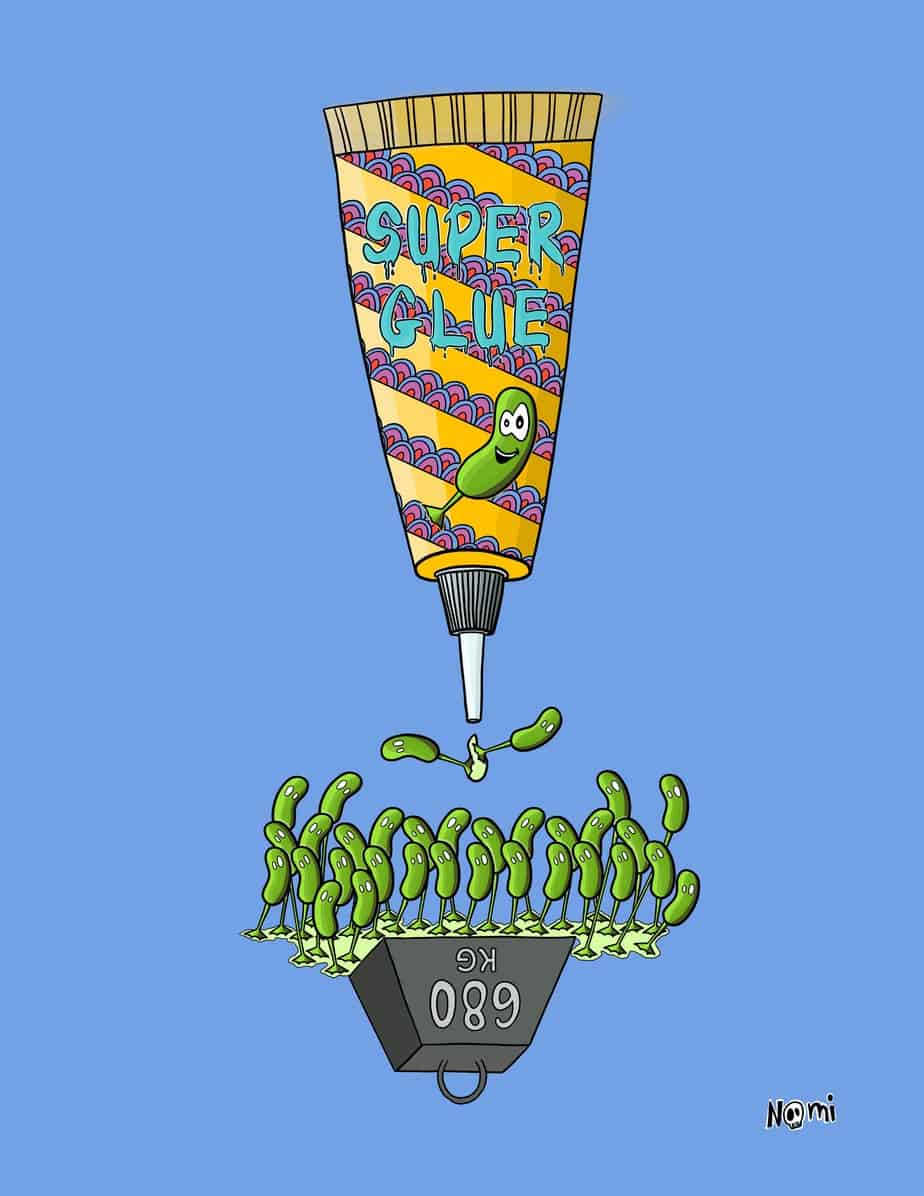
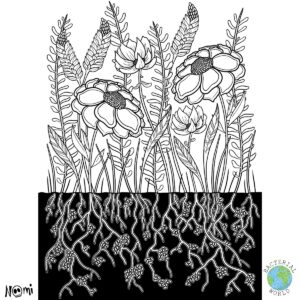

3 Responses
Truly amazing little creatures.
Couldn’t agree more :)